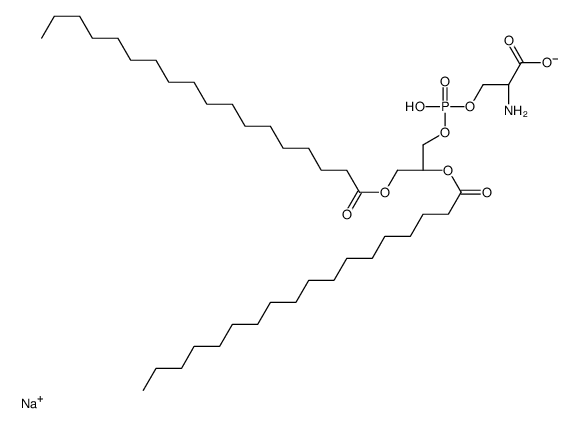1,2-DISTEAROYL-SN-GLYCERO-3-PHOSPHO-L-SERINE SODIUM SALT

1,2-DISTEAROYL-SN-GLYCERO-3-PHOSPHO-L-SERINE SODIUM SALT structure
|
Common Name | 1,2-DISTEAROYL-SN-GLYCERO-3-PHOSPHO-L-SERINE SODIUM SALT | ||
|---|---|---|---|---|
| CAS Number | 321595-13-5 | Molecular Weight | 814.05700 | |
| Density | N/A | Boiling Point | 480℃ | |
| Molecular Formula | C42H81NNaO10P | Melting Point | 304℃ | |
| MSDS | USA | Flash Point | N/A | |
|
A chimerical phagocytosis model reveals the recruitment by Sertoli cells of autophagy for the degradation of ingested illegitimate substrates.
Autophagy 9(5) , 653-66, (2013) Phagocytosis and autophagy are typically dedicated to degradation of substrates of extrinsic and intrinsic origins respectively. Although overlaps between phagocytosis and autophagy were reported, the use of autophagy for ingested substrate degradation by non... |
|
|
Glycogen Synthase Kinase 3 Inactivation Induces Cell Senescence through Sterol Regulatory Element Binding Protein 1-Mediated Lipogenesis in Chang Cells.
Endocrinol. Metab. (Seoul.) 28 , 297-308, (2014) Enhanced lipogenesis plays a critical role in cell senescence via induction of expression of the mature form of sterol regulatory element binding protein 1 (SREBP1), which contributes to an increase in organellar mass, one of the indicators of senescence. We ... |
|
|
TIM-family proteins promote infection of multiple enveloped viruses through virion-associated phosphatidylserine.
PLoS Pathog. 9 , e1003232, (2013) Human T-cell Immunoglobulin and Mucin-domain containing proteins (TIM1, 3, and 4) specifically bind phosphatidylserine (PS). TIM1 has been proposed to serve as a cellular receptor for hepatitis A virus and Ebola virus and as an entry factor for dengue virus. ... |
|
|
Phospholipids trigger Cryptococcus neoformans capsular enlargement during interactions with amoebae and macrophages.
PLoS Pathog. 7 , e1002047, (2011) A remarkable aspect of the interaction of Cryptococcus neoformans with mammalian hosts is a consistent increase in capsule volume. Given that many aspects of the interaction of C. neoformans with macrophages are also observed with amoebae, we hypothesized tha... |
|
|
Automated discovery of novel drug formulations using predictive iterated high throughput experimentation.
PLoS ONE 5 , e8546, (2010) We consider the problem of optimizing a liposomal drug formulation: a complex chemical system with many components (e.g., elements of a lipid library) that interact nonlinearly and synergistically in ways that cannot be predicted from first principles.The opt... |